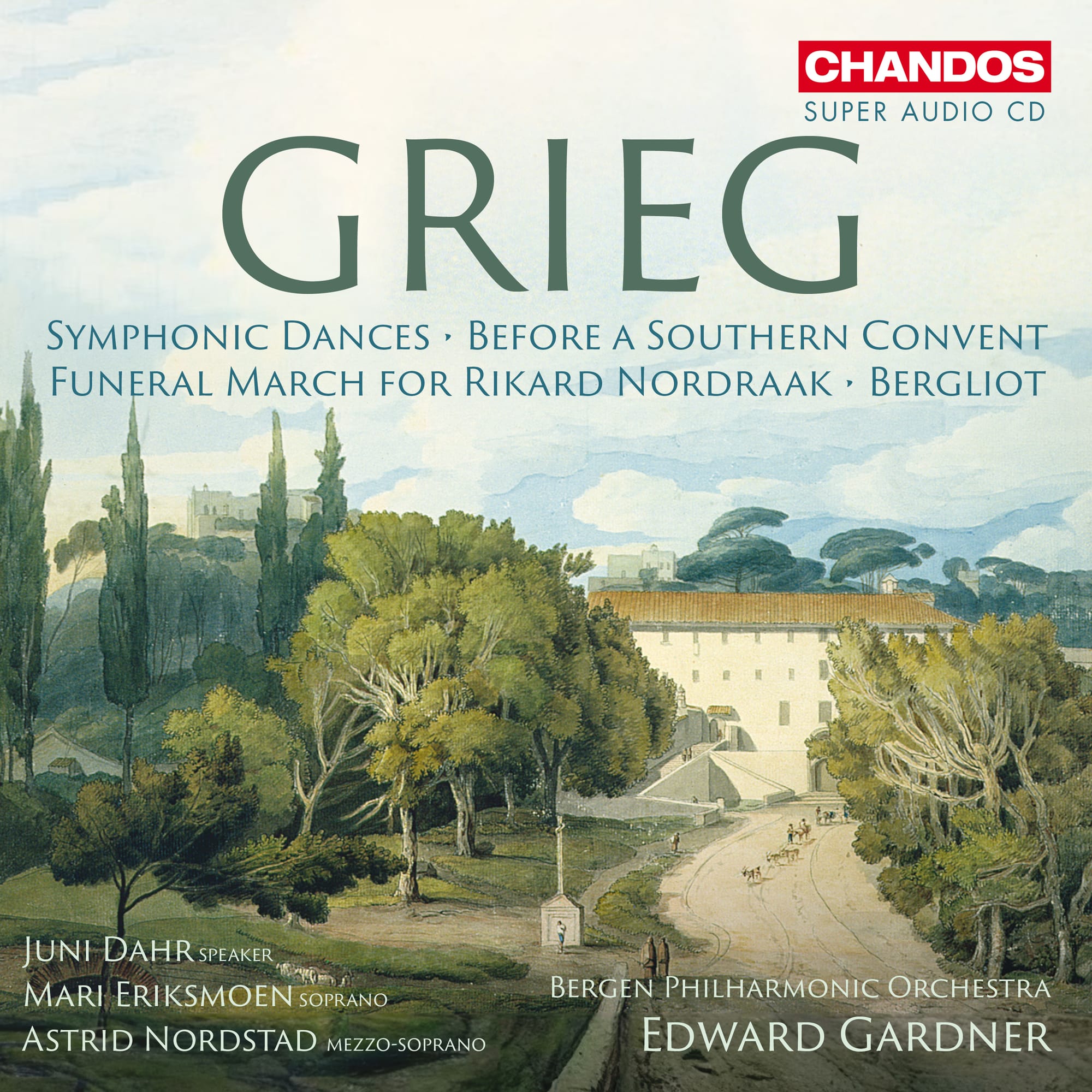Grieg from Bergen
A remarkable, wide-ranging disc

Lucky the person who gets to know Grieg's Symphonic Dances (Sympfiniske Danser), Op. 64 from this performance. Dating from 1896-98, the music is full of buoyant Norwegian melody. There's a special twist to this recording: the Bergen Philhamonic was Grieg's own orchestra (he was Principal Conductor form 1880 to 1882).
Listen to the spirit of Edward Gardner's performance of the first movement, “Halling from Valdres”:
The “symphonic” nature of the piece is never in doubt there; but for me it is the way Grieg tales fresh, Spring-like material in the second, “The Horse-Exchanger”. For all the wonderment of the oboe solos, teh piece has a larger remit than the initial tune might imply:
The intensity often Spring Dance that follows is infectious. This sounds to my ears more like late Grieg, in its slightly grungy dissonances; contrasts are beautifully managed in this performance:
Finally, a movement based on a comic song, and a bridal tune. They emerge in a masterly tapestry, one that includes, in this finale, significant storm clouds lightened by a radiant second section, heard here with impeccable, eve-sensitive phrasing. But more than that they constitute the material for the final part of a four-movement symphonic entity - and Gardner and his Bergen musicians persuade us absolutely of its validity as masterwork. Cast in a phenomenal recording, this is surely now the standard for this piece.
The second of the Symphonic Dances is often excerpted, and certainly was by Thomas Beecham (who only officially recorded that one). A recording on BBC Legends of the complete piece conducted by Beecham, broadcast in 1955 and unexpectedly coupled with William Alwyn's Third Symphony is well worth seeking out (if you can find it).
Grieg's 1871 piece (orchestrated 1885) Bergliot, Op. 42 sets a poem by Bjørnstjerne Bjørnson, a “Declamation with Orchestra”. You might also see the title rendered as “Berljiot”. The booklet mentions the Later Scene from Traviata as an example of a monodrama, a form of spoken word with orchestra popular towards the end of the 19th century. Beethoven marked passages from act II of Fidelio as “Monodram” and also used the form in Egmont; another composer of the later 19th century to explore monogrammatic possibility was Fibich.
The poem was written in 1860, in Rome. The events of the sort are set in the early 11th century. It is a a dramatic episode involving the chieftain Einar Tambarskjelve and his son Eindride, killed by King Harald Hårdråde. The narrator is the titular Berliot, the widow of Einar. This is a story of revenge transformed, Grieg's original score was for narrator and piano; what we hear here is the late orchestration. Grieg's scoring is superb here, and the sense of grandeur at these opening is palpable. Juni Dahr is the speaker, impassioned of delivery. It is the razor-sharp responses of Gardner and his Bergen forces that impresses just as much, though - together, there is a sense of colour and relentless drama that grips the listener. The funeral march is awesome; Grieg writes in multiple shades of grey to overwhelming effect. This is performed in Norwegian (but full translation is given in the booklet) and there is no doubting Dahr's involvement with the text:
The piece Before a Southern Convent (“Foran sydens kloster”), Op. 20 (1871) is contemporaneous with Berliot and also sets Bjørnson (after his 1870 poem Arnljot Gelline). The piece is scored for two female soloists female chorus, and orchestra. Arnljiot Gelline is a name - a Norweain-Swedish saga hero who took part in the Battle of Stiklestad, contung thereafter with a somewhat savage life. The convent in question is the end-point of the journey the daughter of one of Gelline's victims, Ingigerd (who feels guilt at her attraction towards her father's murderer). Dedicated to Franz Liszt, the sore is a little nasterpiece. Mezzo Astrid Eriksmoen is stunning here, joined by soprano Mari Eriksmoen and teh radiant female voices of both the Bergen Philharmonic, and of the Edvard Grieg Kore's (both only credited on the actual track listing).
A funeral march rounds off the album: Funeral March for Rikard Nordstraak, (“Sørgemarsj veer Rikard Nordraak”), EG 107 (1866) in an orchestration by Johan Halvosen (1865-1936). This is a very early work ((1866) composed in the wake of a trip to Rome in 1965. His travelling companion was to have been the titular Rikard Nordraak, but health circumstances prevented this. Nordraak died of tuberculosis in March 1866, after he sent several letters to Grieg, begging the composer to visit him. The guilt-ridden Grieg composed this dark funeral march. Again, it was for piano and exists in an arrangement bytes composer for wind ban and percussion. Halvorsen prepared the symphony orchestra version heard here for Grieg's own funeral.
A remarkable, wide-ranging disc: from earl to late works, from full symphony orchestra to melodrama, this programme is set to explode any preconceptions of Grieg as a composer of little miniatures. A vital purchase.
This disc is available at Amazon currently at a 7% discount here.
